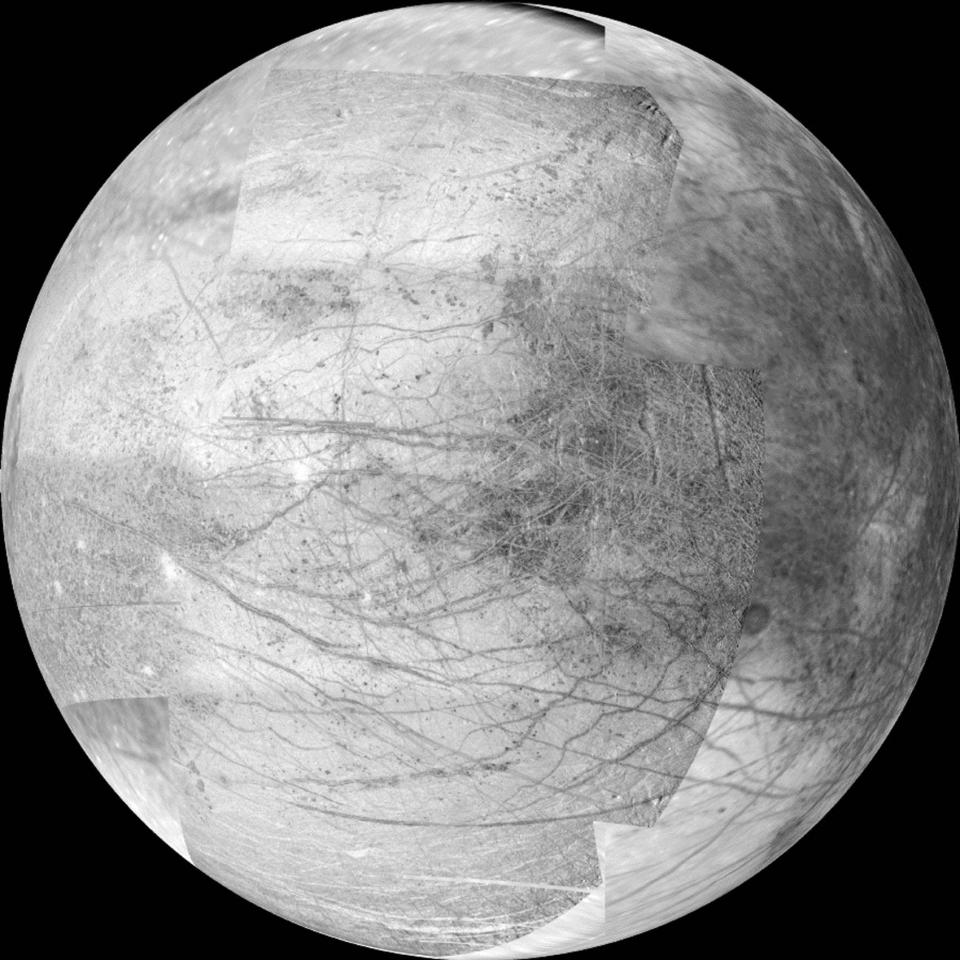Faraway moon mimics Earth tectonics: study - Jupiter's icy moon Europa may have active tectonic plates similar to those that shape the Earth, which had long been thought unique in this respect, scientists said Sunday.
They used images captured by NASA's Galileo spacecraft, which orbited Jupiter and its moons from 1995 to 2003, to study the criss-cross of ridges and fractures on Europa's ice shell.
The moon, slightly smaller than the one orbiting Earth, has one of the youngest surfaces in the Solar System, implying "rapid recycling", said the team.

This 12-frame mosaic released by NASA on March 6, 2000, provides a high
resolution view of the side of Jupiter's moon Europa that faces the
giant planet (AFP Photo/)
They found evidence that a piece of the surface had disappeared along a boundary between two ice plates, possibly when one sunk under the other.
They took this as evidence of surface material being recycled into the moon's interior -- similar to parts of Earth's crust which sink into the underlying mantle at so-called subduction zones where tectonic plates converge.
The team had studied an area of 134,000 square kilometres (51,700 square miles), using the images and a reconstruction of geological features.
They found that a 20,000 km2-portion of surface was missing.
"We propose that Europa's ice shell has a brittle, mobile, plate-like system above convecting warmer ice," they wrote in the journal Nature Geoscience.
"Hence, Europa may be the only Solar System body other than Earth to exhibit a system of plate tectonics."
Europa is one of the four largest moons of Jupiter, the fifth planet from the Sun and the largest in our Solar System. ( AFP )
No comments:
Post a Comment